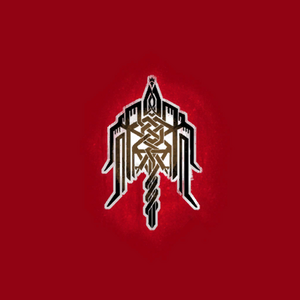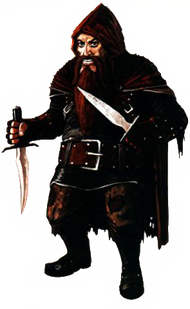Sports72Xtrm (talk | contribs) m (→Background) |
Sports72Xtrm (talk | contribs) m (→Background) |
||
| Line 22: | Line 22: | ||
For less-affluent surface dwarves, association with a powerful kalna can open many doors. They can get credit with dwarven merchants and are offered work opportunities by the powerful [[Dwarven Merchants' Guild]] more readily, sometimes, than more qualified but less-connected individuals.<ref>[[Codex entry: Surface Dwarves]]</ref> |
For less-affluent surface dwarves, association with a powerful kalna can open many doors. They can get credit with dwarven merchants and are offered work opportunities by the powerful [[Dwarven Merchants' Guild]] more readily, sometimes, than more qualified but less-connected individuals.<ref>[[Codex entry: Surface Dwarves]]</ref> |
||
| − | Many surface dwarves maintain ties—not officially recognized, of course, but respectable—to their former [[house]]s in the [[Noble caste|Noble]] or [[Merchant caste|Merchant Castes]], and those contacts are their means of trading with Orzammar. Those who have no ties, because they were cast off by their families or never had good connections, make the trip back underground to trade with Orzammar personally, where they find themselves treated like criminals. A casteless in Orzammar, even a wealthy one from the surface, will be driven away from most merchants, treated like he's carrying a plague at best. So these surface merchants turn to the [[Carta]] for help. The Carta acts as a contact in Orzammar for surface businesses and sells their goods on the black market in exchange for a cut of the |
+ | Many surface dwarves maintain ties—not officially recognized, of course, but respectable—to their former [[house]]s in the [[Noble caste|Noble]] or [[Merchant caste|Merchant Castes]], and those contacts are their means of trading with Orzammar. Those who have no ties, because they were cast off by their families or never had good connections, make the trip back underground to trade with Orzammar personally, where they find themselves treated like criminals. A casteless in Orzammar, even a wealthy one from the surface, will be driven away from most merchants, treated like he's carrying a plague at best. So these surface merchants turn to the [[Carta]] for help. The Carta acts as a contact in Orzammar for surface businesses and sells their goods on the black market in exchange for a cut of the profits.<ref name="Darktown's Deal"/> |
After time on the surface, a dwarf also begins to lose their "[[Stone sense]]", a sensitivity to the Stone that allows a dwarf to navigate below the surface. |
After time on the surface, a dwarf also begins to lose their "[[Stone sense]]", a sensitivity to the Stone that allows a dwarf to navigate below the surface. |
||
Revision as of 04:08, 8 November 2019
Surface dwarves are the dwarves who have left their underground thaigs and live on the surface as well as those who have been born on the surface.
Background
Most of the first surface dwarves were members of the Merchant caste which served as ambassadors from Orzammar to the surface, but the wealth this trade produced caused these merchants and their families to break ties with Orzammar and dwarves as a whole in order to keep the profits for themselves. This exodus was viewed as a bitter betrayal by the rest of the dwarves and the reputation of the Merchant caste had never managed to regain ever since.[1]
Many dwarves have moved on the surface, either as members of expeditions funded by dwarven houses or guilds[2], for their own personal reasons[3], or as a punishment.[4] In ancient times, the punishment of exile was very uncommon and was considered to be one of the fiercest.[5] According to dwarven scholars, surface dwarves may soon outnumber their underground-living peers.
The Shaperate considers surface dwarves to rank amongst the casteless, having given up their caste and claims they may have held--and worst of all, no longer being recognized as a dwarf after having left the embrace of the dwarven progenitor, the Stone. Surfacers forfeit their houses too if they are noble.[6] Indeed, every dwarf who goes to the surface is stripped of caste, effectively exiled and removed from dwarven society forever. But Orzammar relies on continued relations with these exiles to live. This has created a shadowy area of dwarven trade and politics where the rich, powerful, and elite maintain secret ties to people who, by official decree, no longer exist.[7] Despite that there is still debate amongst dwarven politicians about whether or not those who have left Orzammar for the surface should be considered permanent exiles or not, usually fueled by personal and financial interests.[8]
One would assume on the surface, the surface dwarves would rid themselves of the caste divisions. The truth is that thousands of years of tradition are not so easily tossed aside. Even though surface dwarves are officially stripped of their caste, many maintain a hierarchy among themselves along the old caste lines. Formerly noble houses are accorded more respect than casteless brands who come up in search of opportunity. The poorest "noble" dwarf on the surface looks upon the rich "lower caste" dwarves with contempt.
Upper-class surface dwarf society is roughly divided into two camps: kalnas, who insist on maintaining caste and rank (typically those from the Noble or Merchant Caste families) and ascendants, who believe in leaving Orzammar's traditions underground and embracing life in the sunlit world.
Generally, a surface dwarf's life often leads them to become merchants or craftsmen, parleying the skills they may once have held underground into a new life on the surface. Maintaining some tie to Orzammar was seen for generations as the only lifeline for surface dwarves. Bringing surface goods to their kin underground and lyrium and metals to the surface was not only the most lucrative means of making a living, but also a sort of sacred duty, as many surface dwarves willingly accepted exile and the loss of their caste to better serve their house or patron.
In recent years, many surface dwarves, particularly ascendants, have branched out. They started banks, mercenary companies, and overland trade caravans. They became investors and speculators in purely surface trade. These new industries have proven tremendous sources of wealth, but are looked down upon by their more conservative kin.
For less-affluent surface dwarves, association with a powerful kalna can open many doors. They can get credit with dwarven merchants and are offered work opportunities by the powerful Dwarven Merchants' Guild more readily, sometimes, than more qualified but less-connected individuals.[9]
Many surface dwarves maintain ties—not officially recognized, of course, but respectable—to their former houses in the Noble or Merchant Castes, and those contacts are their means of trading with Orzammar. Those who have no ties, because they were cast off by their families or never had good connections, make the trip back underground to trade with Orzammar personally, where they find themselves treated like criminals. A casteless in Orzammar, even a wealthy one from the surface, will be driven away from most merchants, treated like he's carrying a plague at best. So these surface merchants turn to the Carta for help. The Carta acts as a contact in Orzammar for surface businesses and sells their goods on the black market in exchange for a cut of the profits.[7]
After time on the surface, a dwarf also begins to lose their "Stone sense", a sensitivity to the Stone that allows a dwarf to navigate below the surface.
As seen by outsiders
Humans
If the average human, or even elf, were to encounter a dwarf they would most likely assume them to be a merchant or a smith (at best).[10]
Other dwarves
Dwarves on the surface are also considered casteless once they leave their underground thaig, though it is only relevant to those who return--if they are allowed to return at all. Dwarven traders from the surface are allowed to enter and to sell their goods (grains and wood are especially valuable in the dwarven kingdom), but they have no rights and are considered to be no more dwarven than those few humans and elves who do the same. Dwarves who choose to live on the surface lose their connection to the Stone and the favor of the Ancestors, and thus are worthy of little more than pity to an Orzammar dwarf, for upon dying they are said to be lost to the Stone forever. Slurs such as "Cloudgazer", "Air-touched"[6], "Sun-touched" or "Lost to the Stone"[6] are commonly used to refer to their surface kin. Even the casteless dwarves of Orzammar look down on their surface kin.[11] Despite treating surface dwarves like pariahs, those of the Merchant and Noble castes fund speculative business ventures headed by their kin in the surface and maintain secret ties with them in order to expand Orzammar's trade. Even the Carta's black market is secretly tolerated and encouraged because the dwarven elites know that trade with the surfacers is the only thing sustaining Orzammar's economy. [7]
Sometimes, either for political reasons or to escape the social rank forced upon one by the caste system, dwarves will flee from Orzammar to the surface. Many of the casteless who do so will often go through sometimes extreme measures to remove their tattoos, simply because of the constant reminder they provide of what they left behind.[12]
Amongst the surface dwarves
Theoretically, all the business of caste is left behind in Orzammar and under the open sky every dwarf is equal. The truth is, though, that thousands of years of tradition are not easily discarded. A hierarchy still remains among the surface dwarves with members of formerly-noble houses being accorded more respect.[13] Formerly upper-class surface dwarves are either a kalna (typically those from the noble or merchant caste who insist on maintaining rank) or an ascendant, who desire to begin anew.[14]
Notable surface dwarves
- For a complete list, see Category:Surface dwarves.

Kirkwall Merchants' Guild heraldry
- Ademaro
- Bartholomew
- Beregrand
- Bern: He lived in the late Steel Age and early Storm Age. He is a cousin of Trovid Oreson, a corporal in the Legion of the Dead.[15]
- Bolek: A companion of the Black Fox who was considered to be wise.[16]
- Inquisitor Cadash (conditional)
- Jerrik Dace
- Bianca Davri
- Dougal Gavorn
- Hardal: A surface merchant dwarf.[17][18]
- Lace Harding
- Dernal Harrick: A dwarven merchant hailing from Ostwick.[19]
- Kaloch: A famous and gifted artisan in Orlais. He is known for crafting a set of Empress Celene Valmont I's personal masks.[20]
- Oghren
- Orinna
- The Purveyor of Teas
- Rhatigan
- Varric Tethras
- Tug
- Loknar Weem: A nug farmer who tried to raise nugs on the surface and wrote a book on this named "Raising Nugs: A How-To Guide".[21]
Notes
- During the Fourth Blight, Garahel gathered exiled casteless dwarves in order to fight against the darkspawn. They called themselves 'Stone's Bastards' and fought for the chance that their bones might be returned to Orzammar and restored to the Stone after their deaths.[22]
- A dwarf noble Warden may not be recognized by surface dwarves, unless their ascent was very recent. If the Warden gives their name, the surface dwarves may recognize the noble dwarf, since House Aeducan is an ancient royal house.[12]
See also
- Stone Halls of the Dwarves, a book by Brother Genitivi
References
External links
| ||||||||||||||||||||||||


